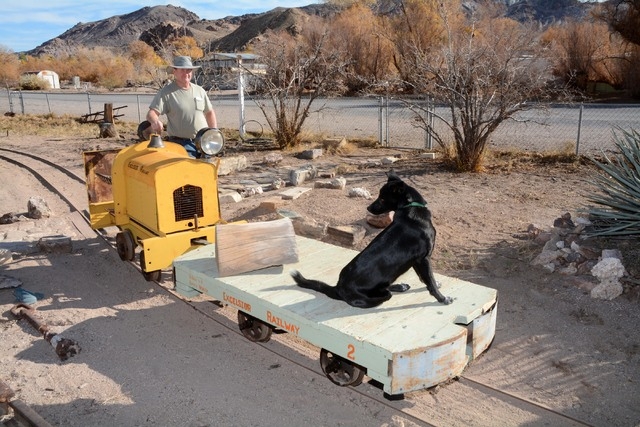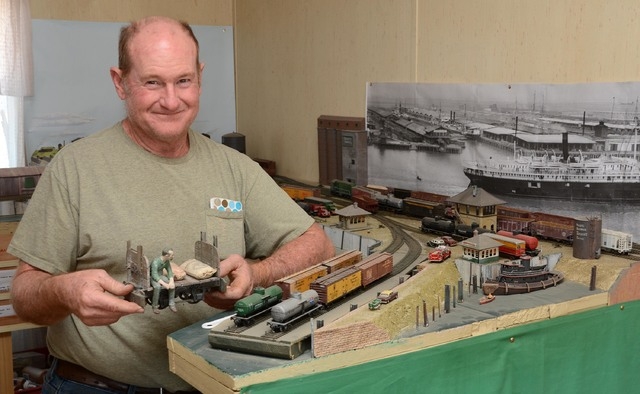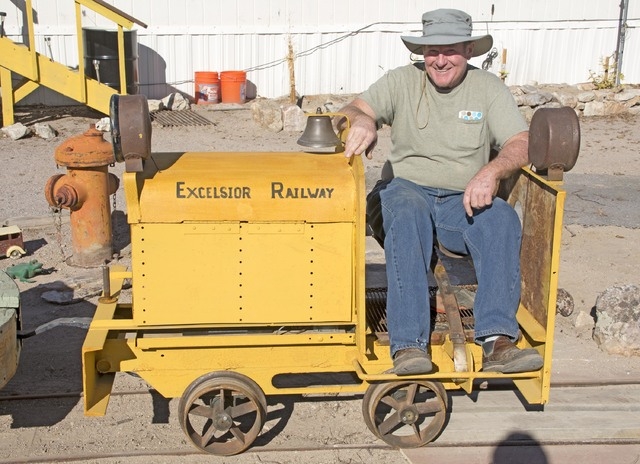RAIL TOWN AGAIN: Beatty sees return of railroad, sort of
As depicted in the town mural, Beatty was once a railroad town, but it has been many decades since the last tracks disappeared. Now, thanks to the happy obsession of trucker Charley Lix, it is possible to ride the rails in Beatty once more—if only for a few hundred feet.
Lix, who moved to Beatty from Sparks about two and a half years ago, has been interested in railroads all his life, and this has developed into a rewarding hobby in model railroading.
Lix enjoys creating realistic scale-model railroad layouts, building much of his rolling stock by hand from scratch. As he shows pieces to a visitor, it is evident from the glint in his eye that the boy is very much alive in the man.
His workshop includes quite an array of miniature tools of all sorts, from tiny augers to a pint-size table saw, and he uses both traditional paint brushes and an air brush to finish them. He has won a number of prestigious awards for his creations.
But building small models was not enough to satisfy Lix’s appetite for railroading. He wanted something big enough to ride. While he was living in Sparks, Nevada, he lay 120 feet of rail in his yard and built a push car for it. He says children enjoyed pushing each other back and forth on it.
So far he has installed 540 feet of track in his yard in Beatty and plans about 100 feet more. The tracks do not make a loop around his property, but go back and forth to different dead-end destinations, “like an industrial railroad,” he explains.
He traded with other enthusiasts over the years to obtain rail and other parts, starting with a 2-1/2 ton Brookville, about fifteen years ago. With that acquisition he began trading with other enthusiasts to acquire much of the equipment he has now, including rail, wheels, axles, pedestals and other parts.
After moving to Beatty, he was able to purchase more parts and quite a bit of rail from Opportunity Village in Las Vegas, which he hauled to Beatty with the help of John Lisle and Frank Jarvis.
One piece that he purchased from Opportunity Village is the body of a tender car. “I have no use for it, myself,” he says, “but someone else might, and you don’t scrap this stuff; you preserve it.”
He explains that most of what he uses originally came from orchard railroads in California. Orchard owners would install these small rail lines to haul equipment and fruit.
Lix’s yellow “Excelsior Railway” locomotive is loosely patterned after small industrial machines, not the big locomotives that are familiar to most people. He built it with the help of Beatty resident Marvin Walker in Walker’s shop.
The inner workings of the locomotive are actually those of an electric wheel chair, powered by a pair of standard car batteries. The engineer sits sideways on a perch made from an old tractor seat mounted on a leaf spring and controls the engine using a joy stick. There is no whistle, but the locomotive does have a bell. It sports front and rear lights meant for a tractor that was around 80 years old.
Lix modified the push car from his Sparks railroad into a flat-bed car for his new set-up. He has used that car to haul firewood in the yard. He continues to make improvements and plans, among other things, to build an engine house in his back yard.
Although he has traditionally used the “Excelsior” name for his creations and is known for it in model railroading circles, he often refers to his Beatty layout as the “Beach Street Railroad,” because it is located at the corner of Beach and Montgomery streets.



















